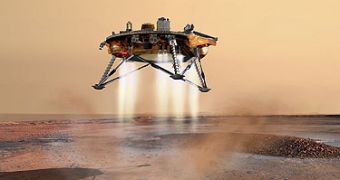NASA's Phoenix Mars lander is ready to launch and agency officials presented August 3 as the earliest possible launch date, despite a hardware glitch that caused one of its cameras to malfunction and the massive Mars storm that is currently affecting the other two probes on the surface, Mars Spirit and Opportunity.
The next robotic probe scheduled to land on Mars is a new rover built for the purpose of touching and analyzing Martian water for the first time. Right now it is being prepared for launch at NASA's Kennedy Space Center in Florida, waiting for the scheduled launch, next month.
Officials are optimistic about the possibility of encountering such a storm at the landing site, saying that Phoenix will just have to endure it, like Spirit and Opportunity are doing now, waiting for the storm to pass and clear out the sky.
"The Viking landers sat through one of the largest dust storms we've seen and you could barely tell," McKay told SPACE.com. "It's not like a dust storm on Earth where your tent gets buried in dust or you can't see six or seven inches in front of you. Mars' atmosphere is very thin. In some cases the winds are high, but globally the winds are not."
To prepare for the Phoenix landing, a device called the Mars Descent Imager was originally supposed to take about 20 images of the surface during the descend, but a glitch of the circuits connecting the camera to the computer could mean that picture data may block the access of crucial gyroscope data of the Phoenix, so mission officials reduced the amount of pictures to a single one.
NASA's Mars Reconnaissance Orbiter (MRO), currently in space around Mars, will have to compensate with its own pictures, to offer a clear view of the landing site.
"We can get the context of what the Phoenix landing site is and what's around it from the Mars Reconnaissance Orbiter," says Mars exploration program director Doug McCuistion of NASA headquarters in Washington, DC, US.
Phoenix will be the first rover to land without airbags to cushion the impact, having to rely on thrusters instead to provide a smooth landing.

 14 DAY TRIAL //
14 DAY TRIAL //